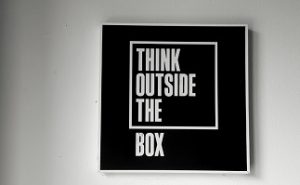
A massive change is taking place as people shift to a flexible workplace model. We call this seismic shift the “Third Wave” in how people work. Many organizations have responded in innovative ways. For example, leaders are learning how to manage by outcomes, investing in leadership coaching, and reimagining their organization’s purpose and vision.
 Skill 1: Extend your “trust walls.” Even though you can’t see people face to face as frequently, you still need to trust them to take personal responsibility for fulfilling their work responsibilities. Trust people until you have ample evidence that your trust is misplaced. Then have the serious conversations needed to get things back on track. In this virtual environment, trust is influenced most by these six factors: clarity, transparency, collaboration, inclusion, empathy, and consistent communication.
Skill 1: Extend your “trust walls.” Even though you can’t see people face to face as frequently, you still need to trust them to take personal responsibility for fulfilling their work responsibilities. Trust people until you have ample evidence that your trust is misplaced. Then have the serious conversations needed to get things back on track. In this virtual environment, trust is influenced most by these six factors: clarity, transparency, collaboration, inclusion, empathy, and consistent communication.
To learn more about the importance of trust and how to build it, check out articles: “Building Focus and Trust in Virtual Teams” and “What the Research Reveals.”
 Skill 2: “Right size” people’s job expectations. Jobs vary considerably in terms of whether they can be done remotely all the time, some of the time, or none of the time. As a manager, your job is to organize people to achieve important organizational goals. Be mindful of how much flexibility is possible in where and when people work.
Skill 2: “Right size” people’s job expectations. Jobs vary considerably in terms of whether they can be done remotely all the time, some of the time, or none of the time. As a manager, your job is to organize people to achieve important organizational goals. Be mindful of how much flexibility is possible in where and when people work.
 Skill 3: Provide clear objectives and measures of success: One of the most important things that you can do to lead in a flexible workplace is set clear objectives and measurable results for people. Key results can be defined in any time increment you like: weekly, monthly, quarterly or annually. The important thing is to write them down, communicate them, ask for feedback, make any refinements you think are reasonable, and then hold people accountable to them.
Skill 3: Provide clear objectives and measures of success: One of the most important things that you can do to lead in a flexible workplace is set clear objectives and measurable results for people. Key results can be defined in any time increment you like: weekly, monthly, quarterly or annually. The important thing is to write them down, communicate them, ask for feedback, make any refinements you think are reasonable, and then hold people accountable to them.
Using objectives and key results (OKRs) makes it possible for people to work from anywhere, knowing full well that they are accountable for achieving specific results. For managers, the trick is learning the habit of planning and documenting work expectations. It’s a bit of a lift, but once people get the hang of it, the payoff is huge in helping people thrive in a flexible work environment.
Here’s an example of OKRs from a utility company that wants to roll out an automated bill paying system. These OKRs were for the IT director:
| Objective: Enable customers to pay bills securely online | ||
| Quarter 1 result | Quarter 2 result | Quarter 3 result |
| Pilot project with 10,000 customers completed and results analyzed | Automated payment system available to 90% of customers | Automated payment system available to 100% of customers |
In this case, the IT director was tasked with coming up with the initial definition of the objective and key results. His manager then reviewed and refined the metrics. They were then shared with the teams responsible for implementation.
 Skill 4: Set clear standards and norms. Even when people work in different places, you still need clear standards and norms of behavior. For example, what norms do you want to set with regard to responding to emails? How about the structure of meetings? What norms will help make sure everyone feels included and has a voice in meetings?
Skill 4: Set clear standards and norms. Even when people work in different places, you still need clear standards and norms of behavior. For example, what norms do you want to set with regard to responding to emails? How about the structure of meetings? What norms will help make sure everyone feels included and has a voice in meetings?
Here are some tips:
 Skill 5: Celebrate innovations in adapting. Sure, it’s easy to bemoan the inconveniences of too many Zoom meetings. But flexible workplaces hold the promise of improving not only how people work, but the overall success of your organization. In fact, they are a catalyst for innovation. So, focus on the positives and appreciate the innovative practices that employees are trying.
Skill 5: Celebrate innovations in adapting. Sure, it’s easy to bemoan the inconveniences of too many Zoom meetings. But flexible workplaces hold the promise of improving not only how people work, but the overall success of your organization. In fact, they are a catalyst for innovation. So, focus on the positives and appreciate the innovative practices that employees are trying.
Did one of your teams figure out how to use a new digital tool to manage a project? Did someone send a clever email to a customer? We’re all learning how to thrive and be effective in flexible workplaces. As a leader, your job is to send positive reinforcing signals when people innovate or go above and beyond. Consider these ideas:
 Skill 6: Focus on building retention. The Great Resignation has resulted in roughly 33 million Americans quitting their jobs since the spring of 2021. Of those leaving their jobs, 79% of U.S. employees did so because of feeling under-appreciated. That’s not surprising when you consider that 65% of employees claim they’ve received no recognition within the last year and that 35% explicitly note that this under-appreciation negatively impacts their productivity; and a whopping 78% say they would work harder if only they were given more recognition.
Skill 6: Focus on building retention. The Great Resignation has resulted in roughly 33 million Americans quitting their jobs since the spring of 2021. Of those leaving their jobs, 79% of U.S. employees did so because of feeling under-appreciated. That’s not surprising when you consider that 65% of employees claim they’ve received no recognition within the last year and that 35% explicitly note that this under-appreciation negatively impacts their productivity; and a whopping 78% say they would work harder if only they were given more recognition.
The flexible workplace provides new opportunities to increase retention. In retaining talent, remember that the number one reason people leave is because of their interactions with their boss. If you’re micromanaging people, if you’re breathing down their necks every hour to see where they are and what they are doing, then you are sending a not-so-subtle signal that you don’t trust people. Here are some keys:
Conclusion
This “Third Wave” is an opportunity for leaders to shift their mindset, commit to supportive values and norms, and provide guidance that supports quality work, balance, and well-being. It is a call for more frequent and transparent communication. It requires being intentional about what your culture will look like and defining new norms. It’s a call to hold yourself to a stronger standard of inclusivity that makes everyone feel like part of the team.
Leading Resources, Inc. is a Sacramento Leadership Development firm that develops leaders and leading organizations. Subscribe to our leadership development newsletter to download the PDF – “The 6 Trust-Building Habits of Leaders” to learn more about how to build trust with your team.